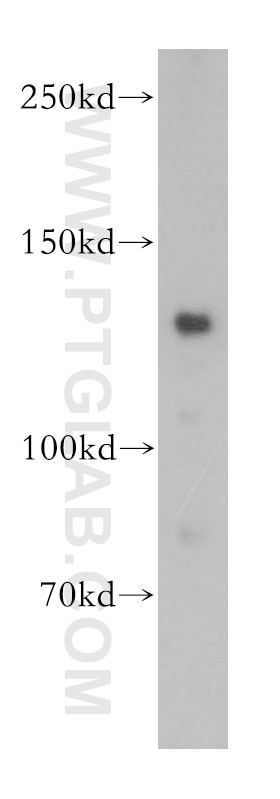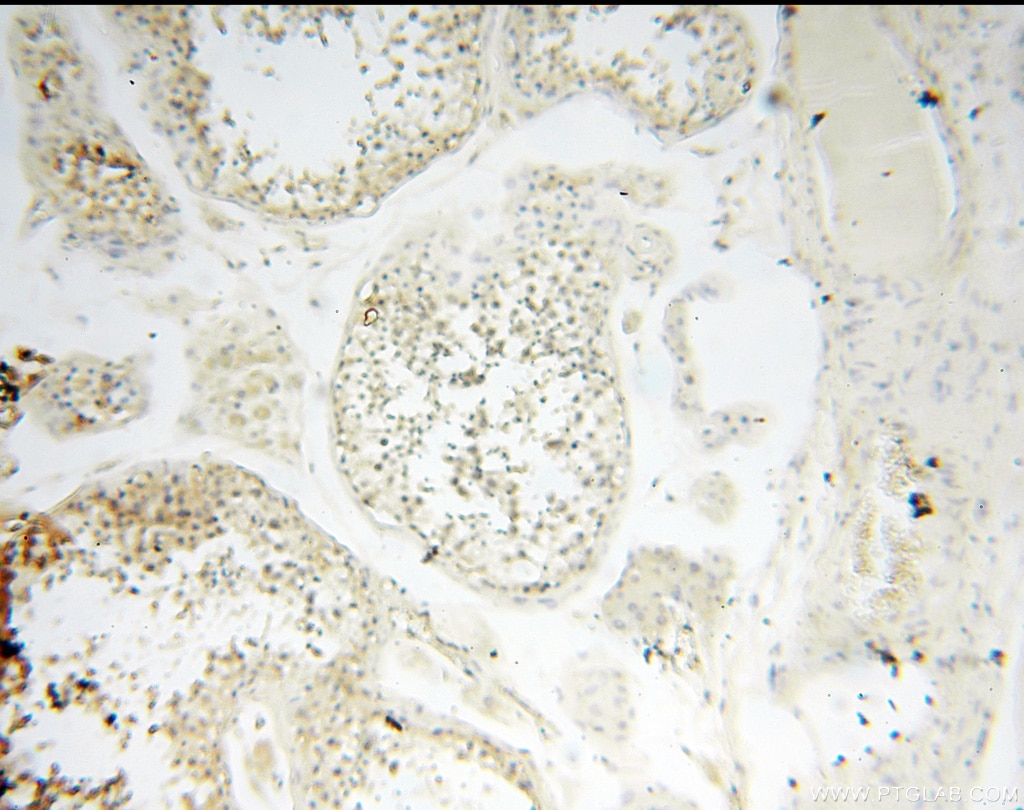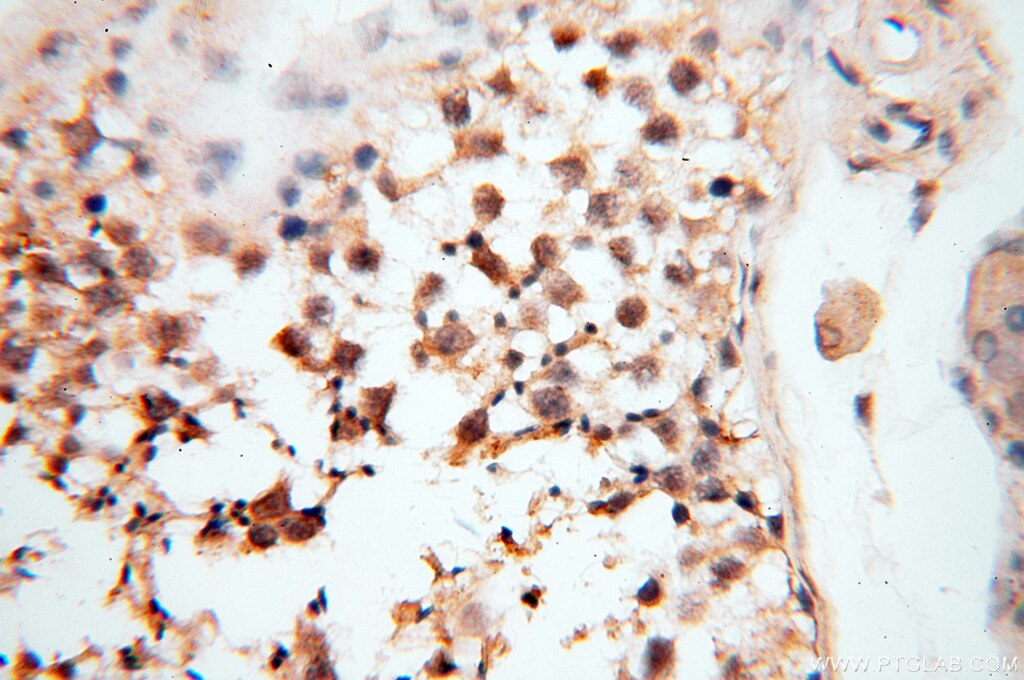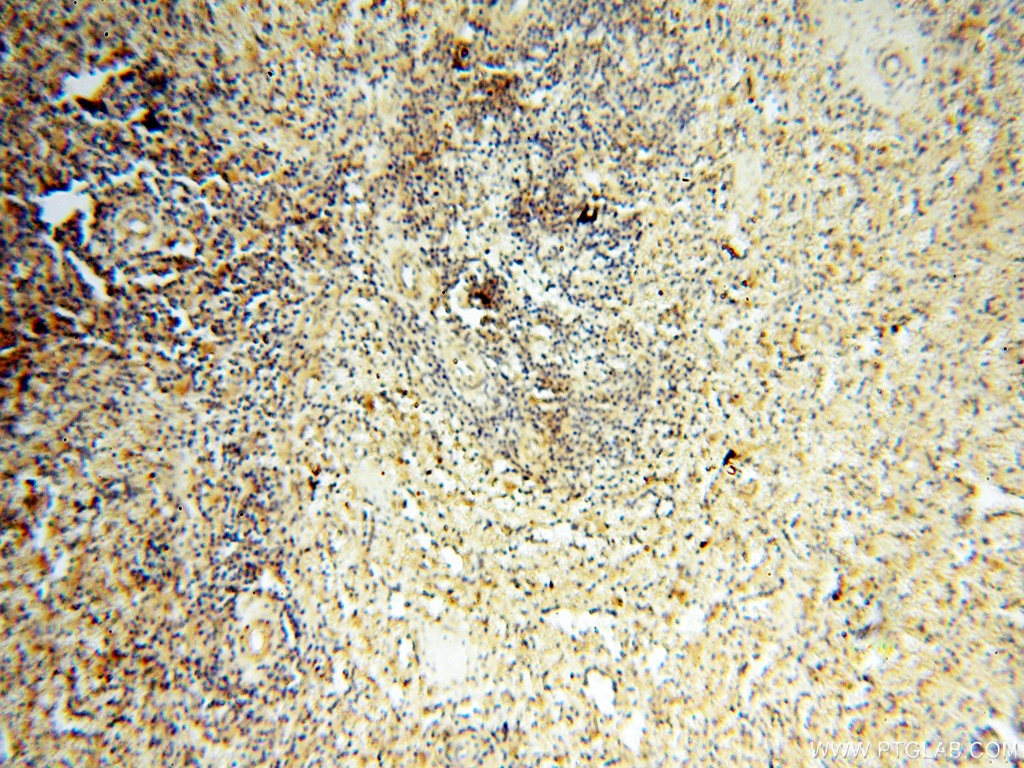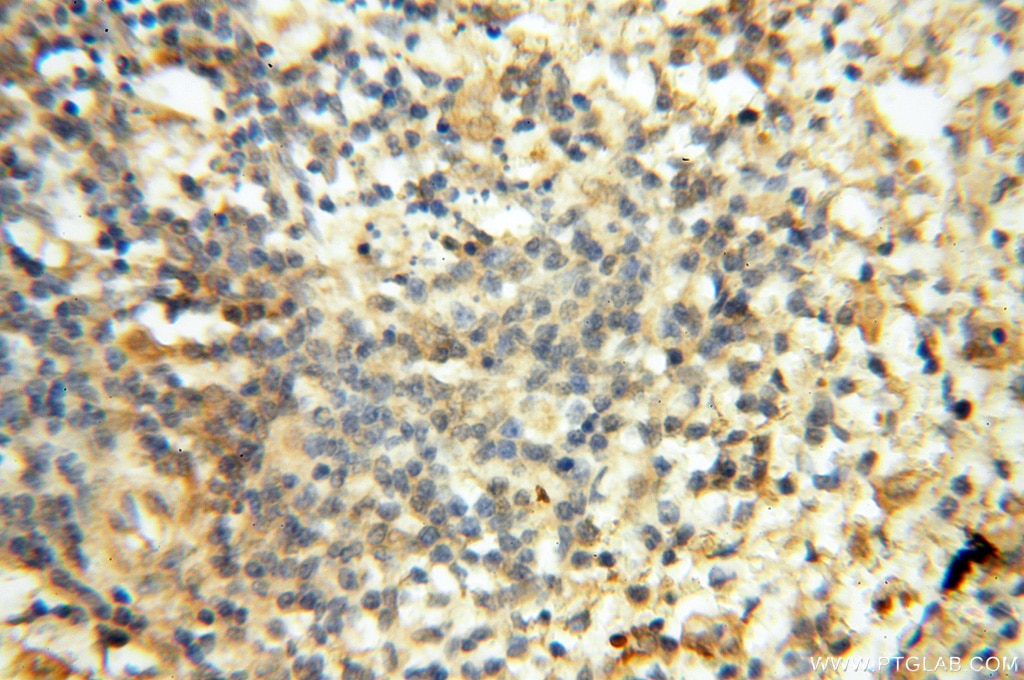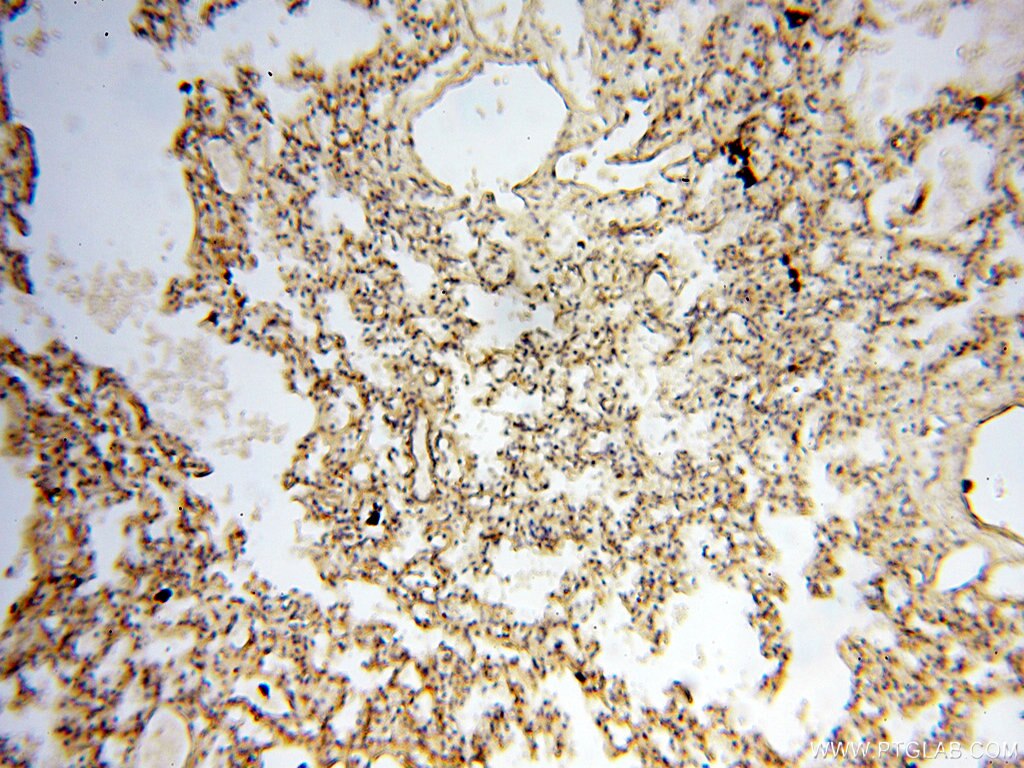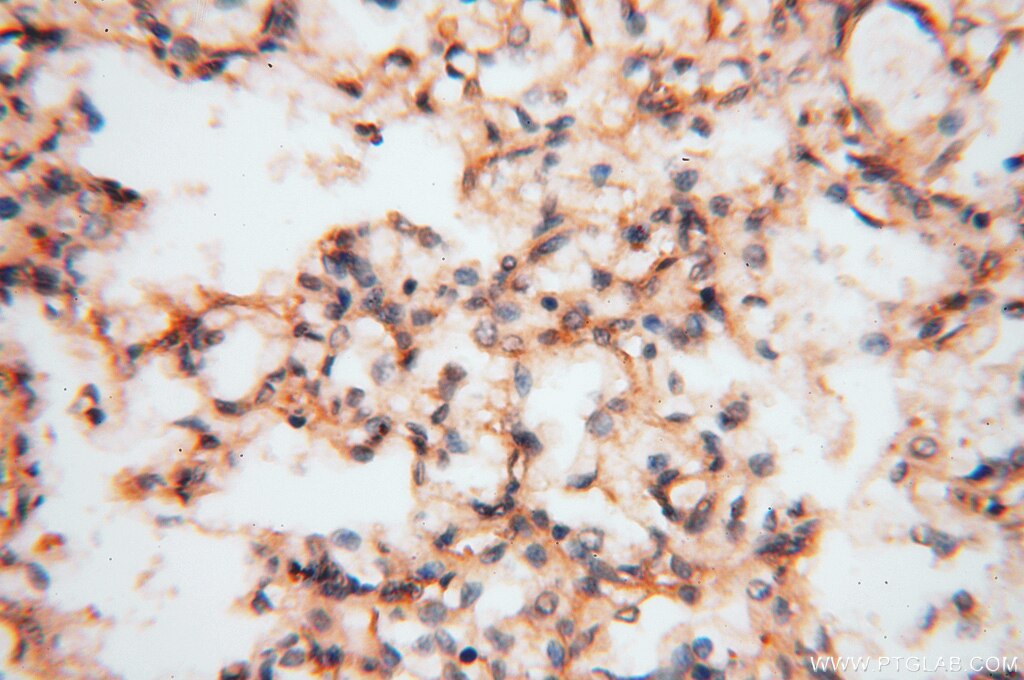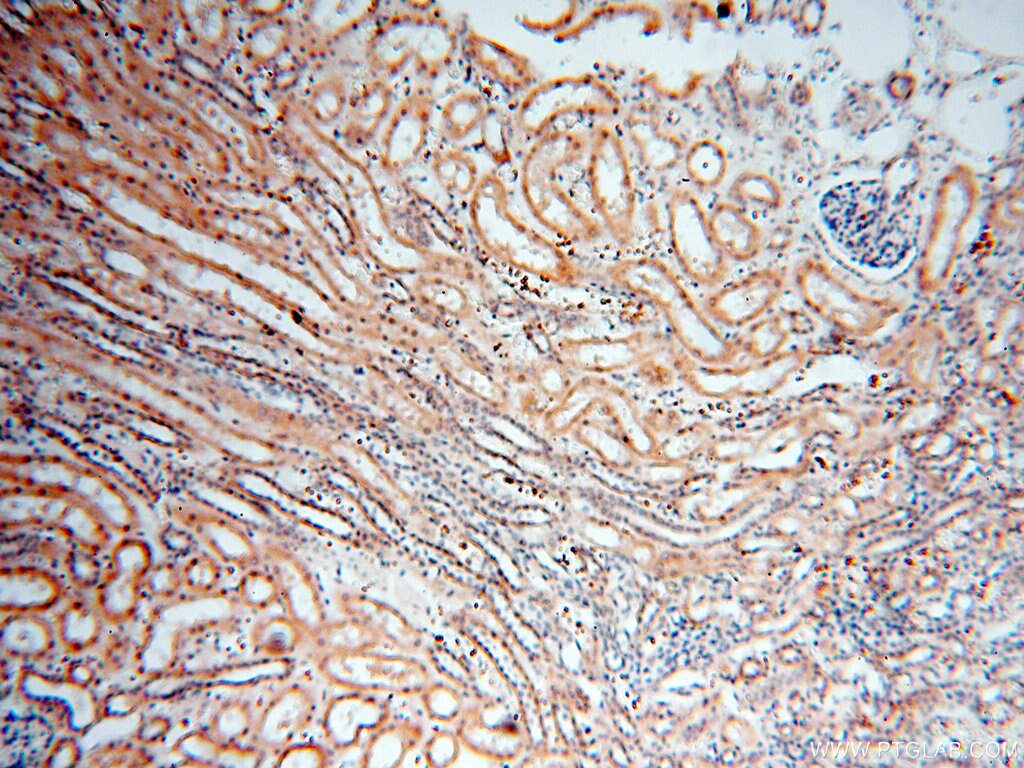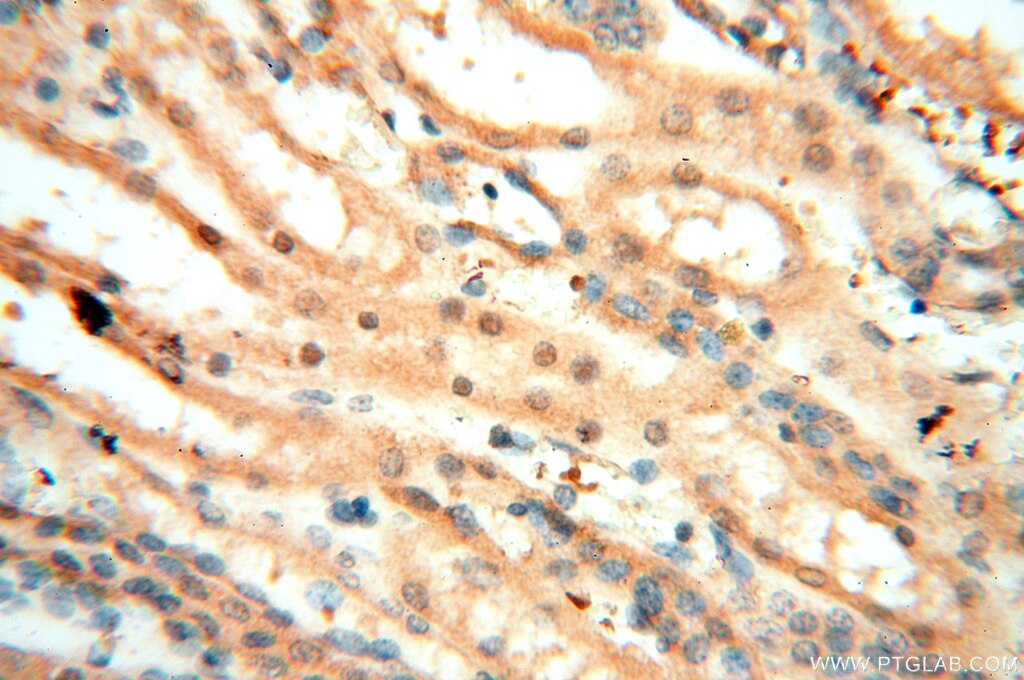Anticorps Polyclonal de lapin anti-CARD6
CARD6 Polyclonal Antibody for WB, IHC, ELISA
Hôte / Isotype
Lapin / IgG
Réactivité testée
Humain et plus (2)
Applications
WB, IHC, ELISA
Conjugaison
Non conjugué
N° de cat : 18029-1-AP
Synonymes
Galerie de données de validation
Applications testées
| Résultats positifs en WB | cellules HepG2 |
| Résultats positifs en IHC | tissu testiculaire humain, tissu pulmonaire humain, tissu rénal humain, tissu splénique humain il est suggéré de démasquer l'antigène avec un tampon de TE buffer pH 9.0; (*) À défaut, 'le démasquage de l'antigène peut être 'effectué avec un tampon citrate pH 6,0. |
Dilution recommandée
| Application | Dilution |
|---|---|
| Western Blot (WB) | WB : 1:500-1:2000 |
| Immunohistochimie (IHC) | IHC : 1:20-1:200 |
| It is recommended that this reagent should be titrated in each testing system to obtain optimal results. | |
| Sample-dependent, check data in validation data gallery | |
Applications publiées
| WB | See 2 publications below |
Informations sur le produit
18029-1-AP cible CARD6 dans les applications de WB, IHC, ELISA et montre une réactivité avec des échantillons Humain
| Réactivité | Humain |
| Réactivité citée | rat, singe |
| Hôte / Isotype | Lapin / IgG |
| Clonalité | Polyclonal |
| Type | Anticorps |
| Immunogène | CARD6 Protéine recombinante Ag12595 |
| Nom complet | caspase recruitment domain family, member 6 |
| Masse moléculaire calculée | 1037 aa, 116 kDa |
| Poids moléculaire observé | 130 kDa |
| Numéro d’acquisition GenBank | BC093825 |
| Symbole du gène | CARD6 |
| Identification du gène (NCBI) | 84674 |
| Conjugaison | Non conjugué |
| Forme | Liquide |
| Méthode de purification | Purification par affinité contre l'antigène |
| Tampon de stockage | PBS with 0.02% sodium azide and 50% glycerol |
| Conditions de stockage | Stocker à -20°C. Stable pendant un an après l'expédition. L'aliquotage n'est pas nécessaire pour le stockage à -20oC Les 20ul contiennent 0,1% de BSA. |
Informations générales
The caspase recruitment domain (CARD) is a homotypic protein-protein interaction module that links components of signal transduction pathways implicated in the regulation of apoptosis or adaptive or innate immunity. Although much progress has been made in assigning precise roles to most CARD-containing proteins, the functions of the 1,037-amino-acid (aa) human and 1,175-aa mouse CARD6 proteins are still unknown. CARD6 has a unique structure in that it contains the CARD at the N terminus, a glutamic acid-rich region following the CARD, and a proline-rich region at the C terminus. CARD6 also harbors a 350-aa region with similarity to upregulated gene 4 (URG4), a protein that is induced in response to hepatitis Bx antigen overexpression and exerts a positive effect on proliferation. Both CARD6 and URG4 share structural features with members of the multifaceted, IFN-inducible GTPase (IFNiGTPase) superfamily, which contains some of the proteins most abundantly induced during cell-autonomous immune responses. The calcualted molecular weight of CARD is 116 kDa, but modified CARD6 is about 130 kDa. (PMID: 18160713)
Protocole
| Product Specific Protocols | |
|---|---|
| WB protocol for CARD6 antibody 18029-1-AP | Download protocol |
| IHC protocol for CARD6 antibody 18029-1-AP | Download protocol |
| Standard Protocols | |
|---|---|
| Click here to view our Standard Protocols |
Publications
| Species | Application | Title |
|---|---|---|
J Cell Mol Med Exercise ameliorates insulin resistance and improves ASK1-mediated insulin signalling in obese rats. | ||
Zool Res Ribosome-associated pathological TDP-43 alters the expression of multiple mRNAs in the monkey brain |
